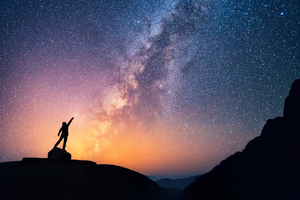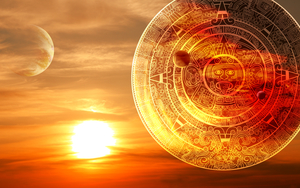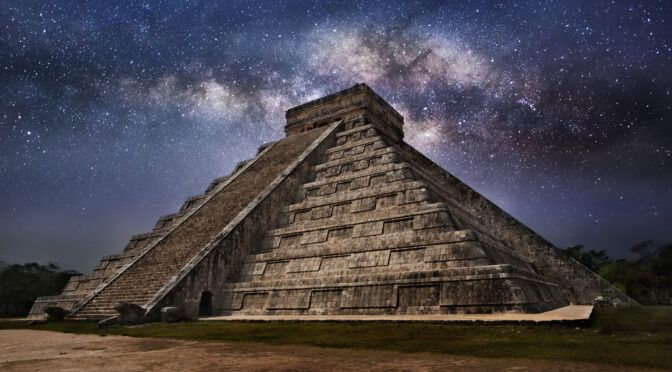One of the most significant moments in human understanding of the universe came when Copernicus looked up into the night sky and theorized that the earth wasn’t at the centre of the universe, or even our solar system. Instead, he correctly theorized (proven later by Galileo) that the earth orbited the sun. To us now it sounds ridiculous to consider otherwise but in 16th Century Europe this was revolutionary and blasphemous.
Copernicus has since been heralded as one of the ‘founding fathers’ of astronomy. However, new analysis of an ancient Mayan text, called the Dresden Codex, dating back to the tenth century has shown that European culture was lagging behind South America by nearly 500 years, and had in fact structured their entire society around astronomy.
Dresden Codex History
The Dresden Codex is the most significant text regarding Mayan understanding of space. Named after the Royal Library of Dresden where it mysteriously ended up in in the 1730s, the codex was considered indecipherable at first.
The first person to make headway into understanding the 39-page document was the German mathematician Ernst Förstemann, a man who knew nothing about Mayan history or culture but noticed the Mayan numerals in the text.

He successfully deduced that these numerals were measurements based on the movement of Venus. However, his theory couldn’t be proven until the mid 20th century when Mayan hieroglyphics were successfully translated.
Teeple and Förstemann were the first to see the intricacy and advanced astronomy of Mayan society. Their initial theories have both been proven and have recently been furthered by a team of science historian led by the University of California’s Gerardo Aldana.
The second person to begin to decipher the true meaning behind the Dresden Codex was chemical engineer John Teeple in the 1920s. He took Förstemann’s theory a stage further and came to the realization that the Maya had been using sophisticated astronomical techniques to adjust their calendars based on irregular Venus cycles.
Mayan Astronomy Unravelled
Aldana’s team have read over the document in painstaking detail to unravel the full extent of Mayan astronomy. This extensive research has enabled them to pinpoint the date of the Dresden Codex’s ‘publication’ to a 25 year period in the tenth century.
The most important discovery made by Aldana’s research is the level of significance that astronomy played in Mayan society. The wording of the text highlights that the movement of Venus was linked to significant religious and secular events. The Maya ‘had a really elaborate ritual set of events that were tied to the calendar,’ Aldana said. ‘They were probably doing large-scale ritual activity connected to the different phases of Venus.’

Astonishingly Aldana believes that most of the recordings were taken by just one person, who would have made every observation with the naked eye. Given the nature of the observation, the information recorded is exceptionally accurate.
The intricacy of the information allowed the Maya to adjust their two calendars – one religious 260 day year and one secular 365 day year – so that they would remain accurate for hundreds of years.
This accuracy was guaranteed by a numerical system, which would reset every 52 years. All of this was done to ensure that their significant cultural events always occurred at the same time every year until the end of the earth.
These findings also allowed the Maya to predict solar and lunar eclipses, as well as the movements of the constellations. The movement of Venus was particularly significant to the Maya because it was considered to be an omen of war and its movement would tell leaders if they should go to battle or not.
For all of their complex understanding of astronomy, the Maya were not flawlessly accurate. They believed that the sun and the moon continued their orbit into the underworld. The sun would inhabit the underworld at night and the moon during the day. However, their understanding of the wider universe was much more advanced than European culture at the same time.
Aldana’s research has furthered historical knowledge of scientific discovery around the world. Without a telescope, the Maya gazed into the sky and began to question their place in the universe. They discovered more answers than historians had previously given them credit for and simultaneously serve as a lesson in the universal nature of human curiosity.
This article was written by The Hearty Soul. The Hearty Soul is a rapidly growing community dedicated to helping you discover your most healthy, balanced, and natural life.
Sources
http://www.biography.com/people/nicolaus-copernicus-9256984
http://www.livescience.com/55837-mayan-astronomers-made-sophisticated-calculations.html
http://www.history.com/topics/mayan-scientific-achievements
http://www.historymuseum.ca/cmc/exhibitions/civil/maya/mmc07eng.shtml

